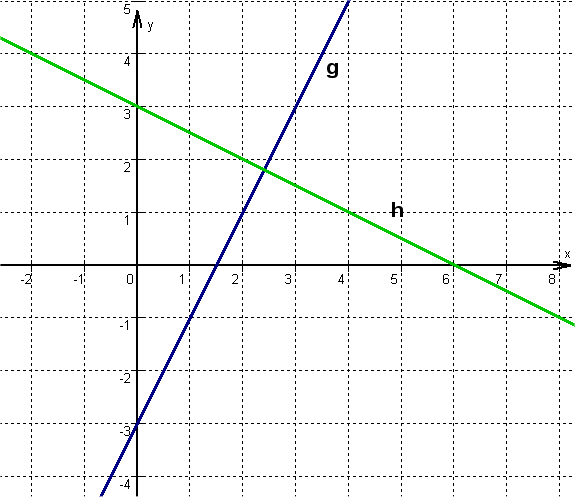For this task you need the following basic knowledge: Line equation
Checking with sketch
Select any point on the straight line, e.g. the -axis sections and . Go from there 1 to the right and, corresponding to the slopes, upwards or downwards. Connect the two points to form a straight line.
If you look at the course of the straight line and, for example, the position of point , you will see that it will hardly lie on the straight line , but probably on . Similarly, you can decide for other points whether a mathematical check is worthwhile: Point can only lie on , for example.
Computational verification
Plug into :
Plug the coordinates y=-1 and x=1 into the equation.
That is a true statement.
⇒ is on .
does not lie on any of the straight lines. This can be clearly seen in the sketch.
Plug into :
⇒
This statement is false, so is not on .
Plug into :
⇒
This statement is false, so is not on .
Plug into :
This statement is correct, so lies on .
